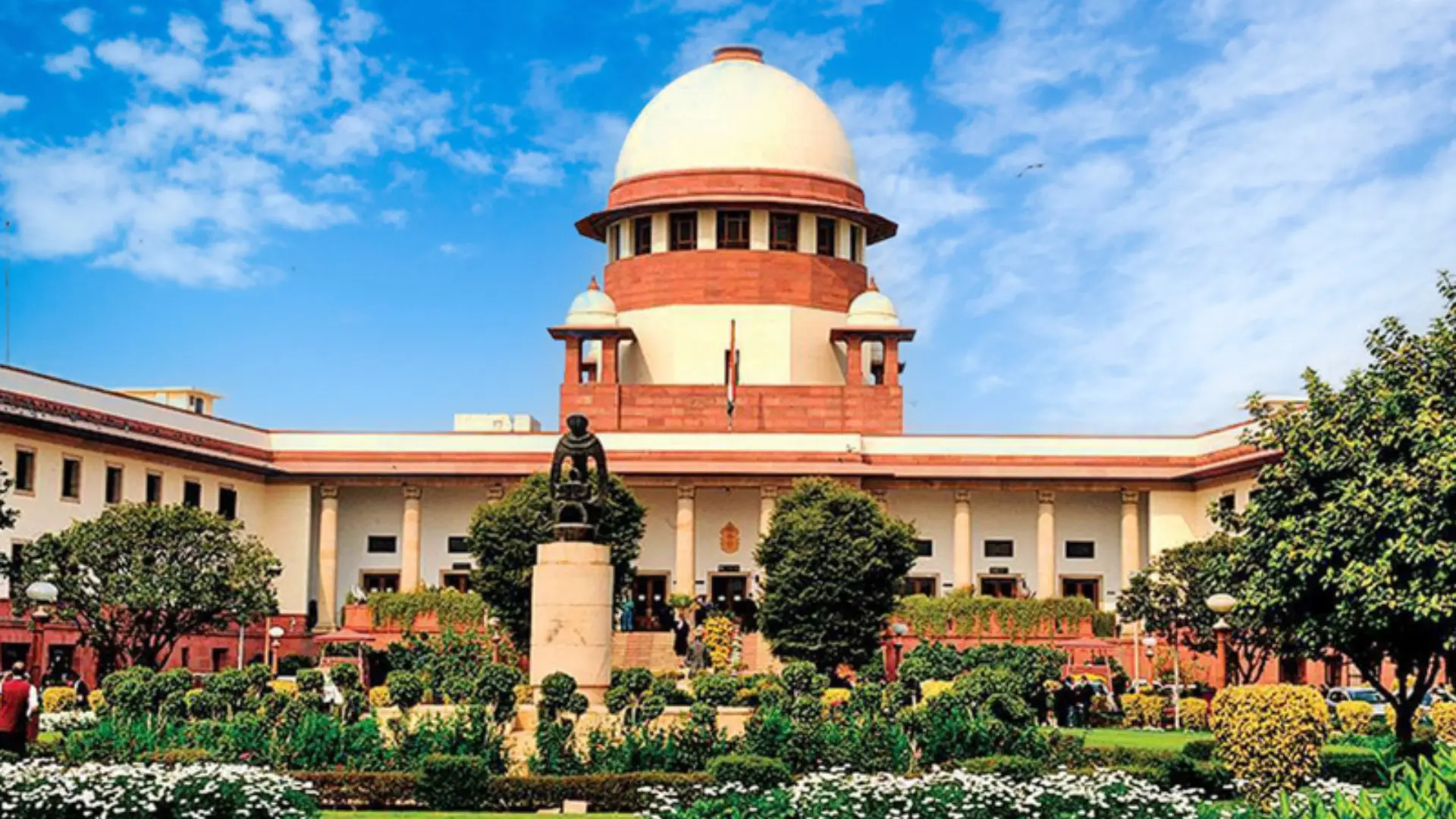The Supreme Court on Tuesday, November 5, ruled that the State cannot take over private property solely under the pretext of serving the “common good”. The ruling, held by a majority of 8:1, adds that private property does not qualify as “material resources of the community” as defined under Article 39(b) of the Indian Constitution.
This decision, reached by a nine-judge Constitution bench, marks a pivotal moment in India’s legal landscape on property rights and State powers.
Case background
The case was brought forward by the Mumbai-based Property Owners Association, challenging the constitutionality of Chapter VIIIA of the Maharashtra Housing and Area Development Act 1976. This chapter allows the State to acquire private property with compensation set at one hundred times the monthly rent. The petitions were initially filed in 1992 and referred to a nine-judge bench in 2002, finally being heard in 2024 after more than two decades.
What was the 1978 ruling?
In a 1978 case — State of Karnataka v. Ranganatha Reddy & Anr. — two judgments were delivered. The judgment delivered by Justice Krishna Iyer stated that material resources of the community covered all resources — natural and man-made, publicly and privately owned. The other judgment, delivered by Justice Untwalia, did not consider it necessary to express any opinion with regard to Article 39(b).
Later, The view taken by Justice Iyer was affirmed by a Constitution Bench in the case of Sanjeev Coke Manufacturing v. Bharat Coking Coal Ltd. (1982). This was also affirmed by a judgment in the case of Mafatlal Industries Ltd. v. Union of India.
Revisiting Article 39(b)
Article 39(b) of the Indian Constitution directs the State to work towards redistributing resources to best serve the public interest. However, the Supreme Court’s recent ruling clarifies that private property cannot be classified as “material resources of the community” merely because it may meet a certain social or economic criterion. The majority opinion, led by Chief Justice of India DY Chandrachud, asserts that taking private assets in the name of the common good requires a more rigorous justification.
The Chief Justice stated, “Not every resource owned by an individual can be considered a material resource of a community only because it meets the qualifier of material needs.” He further added that determining whether a resource falls within this category requires evaluating factors such as the resource’s nature, its impact on public welfare, scarcity, and the consequences of it being privately held.
Majority and dissenting opinions
The 8-1 majority opinion, authored by Chief Justice DY Chandrachud, found that Justice Krishna Iyer’s 1978 ruling, which suggested that all private properties could be considered community resources, is “unsustainable.” The majority bench contended that while certain privately held resources may potentially be included under Article 39(b), this should be assessed on a case-by-case basis rather than through a blanket application.
However, Justice BV Nagarathna partially dissented, while Justice Sudhanshu Dhulia fully dissented, suggesting that there could be instances where private property might indeed align with the goals of Article 39(b) if it serves a clear communal benefit.
Economic shifts
The Supreme Court bench acknowledged that India’s economic outlook has shifted significantly since the 1960s, when earlier legal philosophies favouring nationalisation were more prevalent. The Supreme Court noted, “India’s dynamic economic policies over the past three decades have contributed to the country’s rapid growth, positioning it among the world’s fastest-growing economies.” Consequently, the bench reasoned that a rigid interpretation of “community resources” could hinder private ownership and entrepreneurial growth.
Legal protections under Article 31C
Article 31C protects laws formulated under Articles 39(b) and 39(c), allowing the State to acquire resources essential to the community’s welfare. However, the recent ruling introduces a nuanced perspective, suggesting that this provision cannot be used as a justification for the wholesale appropriation of private property without assessing the community impact.
Article 31C was introduced by the 25th Amendment in 1971. Its purpose was to safeguard the Directive Principles of State Policy (DPSP) outlined in clauses (b) and (c) of Article 39, which detail certain policies the State should follow.
The 25th Amendment was opposed in the notable Kesavananda Bharati case. In this case, a thirteen-judge bench of the Supreme Court ruled that the Constitution has a basic structure that cannot be changed through amendments.
However, the 42nd Amendment modified Article 31C during the Emergency. This amendment prioritised all DPSPs, rather than just those specified in Article 39 (b) and (c).
Criteria for ‘material resources of the community’
The ruling clarifies that, to qualify as a “material resource of the community”, a resource should be assessed through multiple lenses:
Nature and characteristics of the resource
Impact on public welfare if the resource is State-controlled versus privately held
Scarcity and availability of the resource
Implications of concentrated ownership among private entities
The Supreme Court has indicated that the “public trust doctrine” can serve as a guiding principle for identifying such resources. This doctrine asserts that certain resources should be preserved for public use and that the government holds them in trust for the benefit of all citizens.























